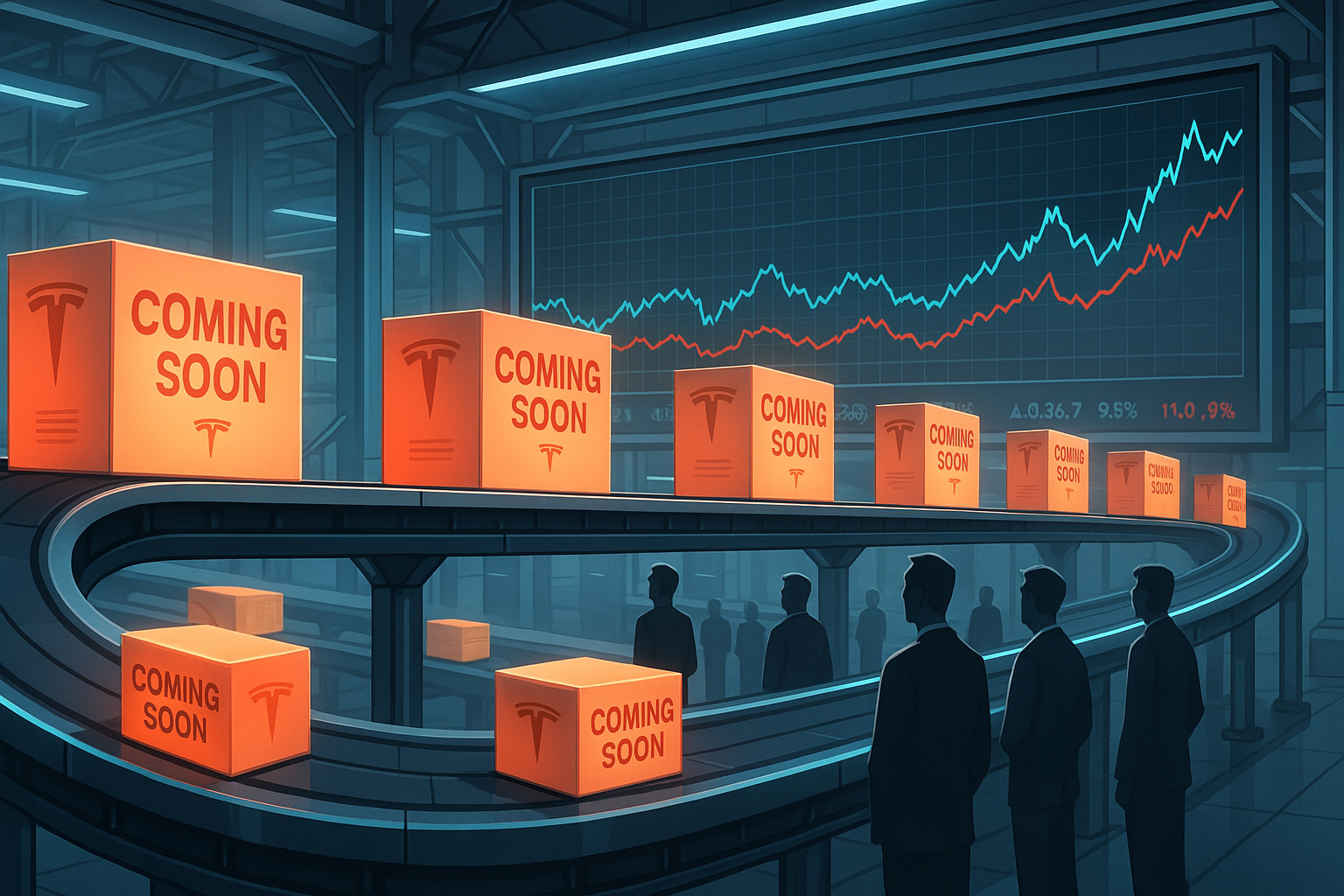I've been watching Tesla for years now, and something about their business strategy has crystallized for me recently. What Elon Musk has built might be the most fascinating example of financial perpetual motion in modern markets—a company that has somehow mastered the art of subsisting on promises rather than products.
The pattern is almost beautiful in its simplicity. Tesla announces something revolutionary (usually via a glitzy presentation or, increasingly, an Elon tweet). Pre-orders open immediately. The stock jumps. Delivery dates quietly slip. And then—right when investor patience might wear thin—another dazzling announcement arrives to reset the cycle.
Sound familiar? It should.
Remember the Semi truck? Announced with fanfare in 2017, it's delivered... well, a handful of units to PepsiCo in what looked suspiciously like a PR exercise rather than actual production. The new Roadster was supposed to be delivering "unforgettable experiences" by 2020. Three years later, and those experiences remain largely hypothetical.
"This strategy was brilliantly suited for the zero-interest-rate environment we had for years," explained a Wall Street analyst I spoke with recently (who requested anonymity to speak frankly about a polarizing stock). "When capital is essentially free, narratives trump numbers. Tesla mastered that game."
But here's where it gets interesting. The financial environment has shifted dramatically. Interest rates have climbed. Investors who once had infinite patience for "jam tomorrow" propositions are increasingly saying, "Where's my toast?"
It's what I've started calling a "promise duration mismatch." Tesla issues long-duration promise assets—things that might materialize years from now—while funding themselves with increasingly short-duration investor patience. When capital gets expensive, that gap becomes problematic.
The parallels to the housing bubble aren't perfect (what analogy is?), but they're instructive. Financial institutions that ran duration mismatches between long-term assets and short-term funding found themselves in trouble when that short-term funding dried up.
Now, Tesla bulls—and there are still plenty—will counter that the company has consistently defied skeptics. They built mass-market electric vehicles when conventional wisdom said it couldn't be done. They achieved automotive margins that made Detroit executives weep.
Fair points! I'm not questioning whether Tesla can innovate. They clearly can.
The question is whether the company can deliver specific promises on their stated timelines, especially as every traditional automaker pours billions into the EV space.
Look, what's particularly fascinating is how Tesla has blurred the line between ambitious product roadmaps and financial engineering. At what point does continuously announcing the next big thing to maintain stock momentum become... something else entirely? The SEC has occasionally raised eyebrows at Musk's pronouncements, but the strategy itself remains in a gray area.
Having covered tech companies for over a decade, I've never seen a company so effective at creating excitement about what's coming rather than what's here. The greatest trick Tesla ever pulled wasn't making electric cars cool (though they did that too). It was convincing the market that revolutionary products were always just around the corner, justifying astronomical valuations in the process.
The market, however, appears to be catching on. Tesla's stock has fallen substantially from its 2021 peak—suggesting that investors are starting to distinguish between Elon's promises and Tesla's deliverables.
Could the company still surprise us all and actually deliver its robot army, autonomous taxis, and affordable EVs on schedule?
Of course. But history suggests we shouldn't hold our breath.
In the meantime, the rest of the auto industry isn't standing still. They're catching up on EVs while Tesla continues promising breakthroughs that remain tantalizingly out of reach.
Like all great magic tricks, once you see how it's done, it loses some of its power. Tesla investors might finally be catching on to the sleight of hand—and demanding to see what's actually in the magician's other hand.
